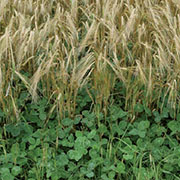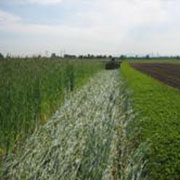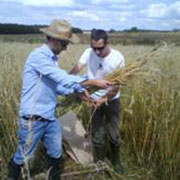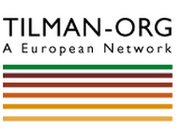TILMAN-ORG



More about the project
Main results and conclusions
All partners defined their activities in the six work packages on data collection from field trials (WP1), crop yields and quality (WP2), soil fertility (WP3), weed management (WP4), nutrient dynamics (WP5), and farm prototyping (WP6).
- Most of the TILMAN-ORG research activities were based on 20 replicated field trials that were classified as long-term (older than seven years), mid-term (three to seven years), and short-term (younger than two years or starting) in WP1. Four new field trials with reduced tillage and green manures as factors have been set up.
- Field trial data and data from literature were collected in WP1 and used for a meta-analysis on the crop, weed and soil effects of reduced soil tillage under organic farming in WP2.
o Analyses conducted confirm that reduced tillage increases soil carbon content and weeds, but produces lower yield as compared to the plough system. The meta-analysis stated that weeds were not the main reason for lower crop yield. Interestingly the reduction in ploughing density only increased soil carbon without compromising crop yields. - More than 159 farmers from ten European countries were interviewed and expressed their views and experiences with reduced soil tillage and green manures in WP2.
o The most important motivations of farmers to reduce soil tillage were related to soil fertility preservation and they saw problems mainly with crop management, machinery and yield performance. Three groups of farmers were identified: “Soil conservationist” farmers were motivated by minimizing soil and environmental impacts. “Agro-technically challenged” farmers mainly expressed agronomic problems. Green manure and no-tillage were more frequent in Northern Europe whilst reduced tillage was more frequent in Southern Europe. - Soils from treatments of seven field trials were analysed for a previously defined minimum data set in WP3, which was part of the Handbook of Methods. Soil strata were sampled according to the soil tillage depths in each field trial down to the layer below the plough pan.
o Carbon stocks were influenced by the form of tillage at all sites in the uppermost soil layer, but were additionally driven by the time of tillage management and the form of fertilization. Over the whole soil profile, carbon stocks were not significantly different.
o In depth analyses were based on DNA and phospholipid fatty acids as molecular markers to describe microbial community structure and functions. Effects of the three sites Thil (FR), Scheyern (DE) and Frick (CH) and soil depths as well as a development of microbial communities under reduced and plough systems were clearly reflected in the analyses.
o Greenhouse gas emissions were measured at the three sites Frick (CH), Scheyern (DE) and Merelbeke (BE). They revealed mainly event-based emissions and tended to stimulate higher nitrous oxide emissions in soils of reduced soil tillage depending on the pre-crop. How far the higher emissions are compensated by soil carbon build-up is matter of current evaluations. - Weed control may be the most challenging work for organic farmers, who want to implement reduced soil tillage without herbicides.
o Based on 13 field trials across Europe, it was found in WP4 that despite elevated weed density, biomass, and diversity in reduced tillage treatments as compared to ploughing, crop yield was rarely reduced. Where green manure types were tested across the tillage treatments, certain green manure species were found suitable to suppress weeds. - Nitrogen use efficiency and nitrogen dynamics in reduced tillage was analysed in WP5 using datasets from nine field trials.
o Yields were found to be lower under reduced tillage as compared to the plough and likewise the nitrogen use efficiency was also lower.
o The effect of green manure on crop yields was positive, but left a large amount of N unused, which is prone to loss. - Nutrient dynamics were modelled with NDICEA based on data sets from five field trials in WP5. As the model output was not satisfying, the model was recalibrated with data sets from TILMAN-ORG field trials and a new “decay factor” was introduced. Still the model was not reflecting the measured data to the desired precision.
- Results from six field trials, the literature review and farmer interviews were used for a multi-criteria assessment (MASC) farm prototyping in WP6.
o Conservation of micro- and macro-fauna was improved in reduced tillage and also when green manures were used. More problems occur with respect to weed control, pests and diseases. No economic problems were identified.
o A weed module was included in the MASC model in collaboration with WP3. - TILMAN-ORG was disseminated actively to the public (website, print media, videos), to the farmers (articles, presentations, field days), and the scientific community (conferences, peer reviewed articles). A complete session at the Organic World Congress in Istanbul was devoted to TILMAN-ORG as a final display of achieved results, which received a lot of attention. All partners participated in disseminating TILMAN-ORG wherever possible.
TILMAN-ORG
 15 partners, 11 countries
15 partners, 11 countries
Coordinator
Dr. Paul Mäder, FiBL Research Institute of Organic Agriculture, Switzerland
Partners
Dr. Christophe David, ISARA Lyon, France
Prof. Dr. Michael Schloter, Helmholtz Zentrum München, Germany
Dr. Thorsten Haase, University of Kassel, Germany
Dr. Chris Koopmans, Louis Bolk Institute, The Netherlands
Ir. Wijnand Sukkel, Wageningen University and Research Centre, The Netherlands
Ir. Koen Willekens, Institute for Agricultural and Fisheries Research, Belgium
Scientific Director Lucien Hoffmann, Public Research Center-Gabriel Lippmann, Luxembourg
Dr. Julia Cooper, Newcastle University, United Kingdom
Dr. Thomas Döring, The Organic Research Centre - Elm Farm, United Kingdom
Prof. Dr. Anne Luik, Estonian University of Life Sciences, Estonia
Prof. Dr. Marc Mazzoncini, Centro Interdipartimentale di Ricerche Agro-Ambientali, Italy
Prof. Dr. Paolo Bàrberi, Scuola Superiore Sant´Anna, Italy
Prof. Dr. F. Xavier Sans Serra, Universitat de Barcelona, Spain
Director Andreas Kranzler, Research Institute of Organic Agriculture, Austria
Project stakeholders
The project's dissemination activities will target farmers, advisors, and the scientific community, but also the agricultural support industries and policy makers.
The main innovative strategy of the project is to adapt conservation agriculture approaches to organic farming drawing on existing field experiments and existing practical experiences across Europe.
